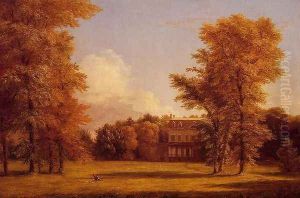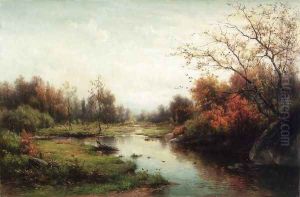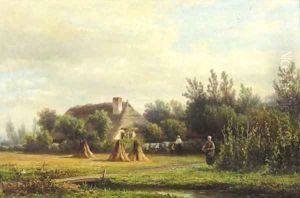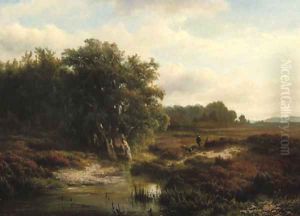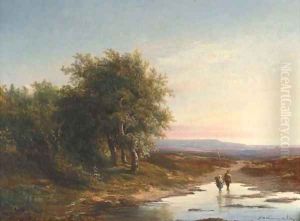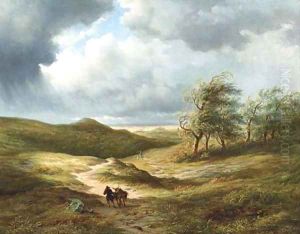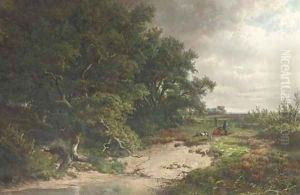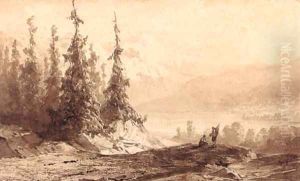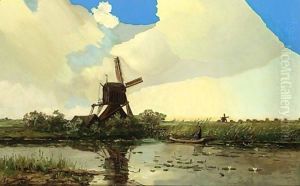Hendrik-Dirk Kruseman van Elten Paintings
Hendrik-Dirk Kruseman van Elten was a Dutch-American artist born on November 14, 1829, in Alkmaar, Netherlands. He was primarily known for his landscape paintings. Kruseman van Elten came from an artistic family; his father was a notable art dealer and restorer. This environment undoubtedly influenced his early development as an artist. He initially trained at the Academy of Fine Arts in Amsterdam and was a pupil of the landscape painter Cornelis Lieste.
In 1865, Kruseman van Elten moved to the United States, which became a significant turning point in his career. He settled in New York City and quickly became a part of the artistic community there. His work was well-received, and he became known for his depictions of the American Northeastern landscape, especially the Hudson River Valley, which echoed the Hudson River School style. Kruseman van Elten's approach to landscape painting was characterized by a fine attention to detail and a romantic portrayal of nature.
Kruseman van Elten achieved considerable success in the United States. In 1883, he was elected as an Associate member to the National Academy of Design, and he became a full Academician in 1885. His works were exhibited widely, including at the National Academy of Design and the Boston Art Club. He also showed his work internationally, returning to exhibit in Europe and winning medals in Vienna (1873) and Paris (1878).
Towards the end of his life, Kruseman van Elten returned to Europe, spending his final years in Paris, France. He continued to paint and exhibit his works, maintaining the reputation he had built in the United States. Hendrik-Dirk Kruseman van Elten passed away on July 12, 1904. Today, his paintings can be found in various art collections, both private and public, and they serve as a testament to the international exchange of artistic ideas in the 19th century, as well as the enduring appeal of the American landscape tradition.
